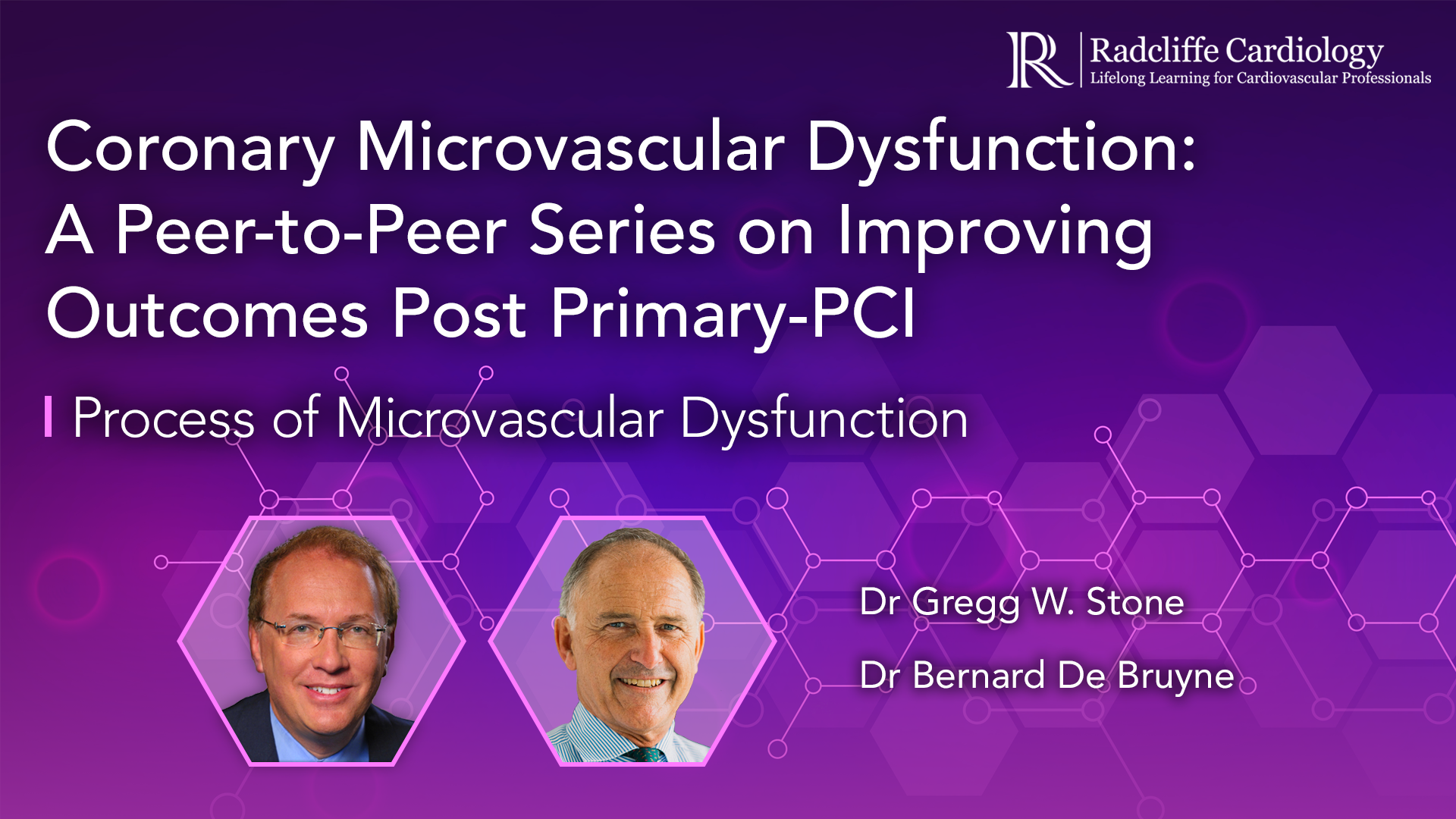Coronary Microvascular Dysfunction: A Peer-to-Peer Series on Improving Outcomes Post Primary-PCI
Published: 16 August 2021
-
Views:
 28495
28495
-
Likes:
 7
7
-
Views:
 28495
28495
-
Likes:
 7
7
-
 6m 7sPart 1 | Session 1 Morbidity of Patients Post AMI/STEMI — Part A Gregg Stone, Colin Berry
6m 7sPart 1 | Session 1 Morbidity of Patients Post AMI/STEMI — Part A Gregg Stone, Colin Berry
-
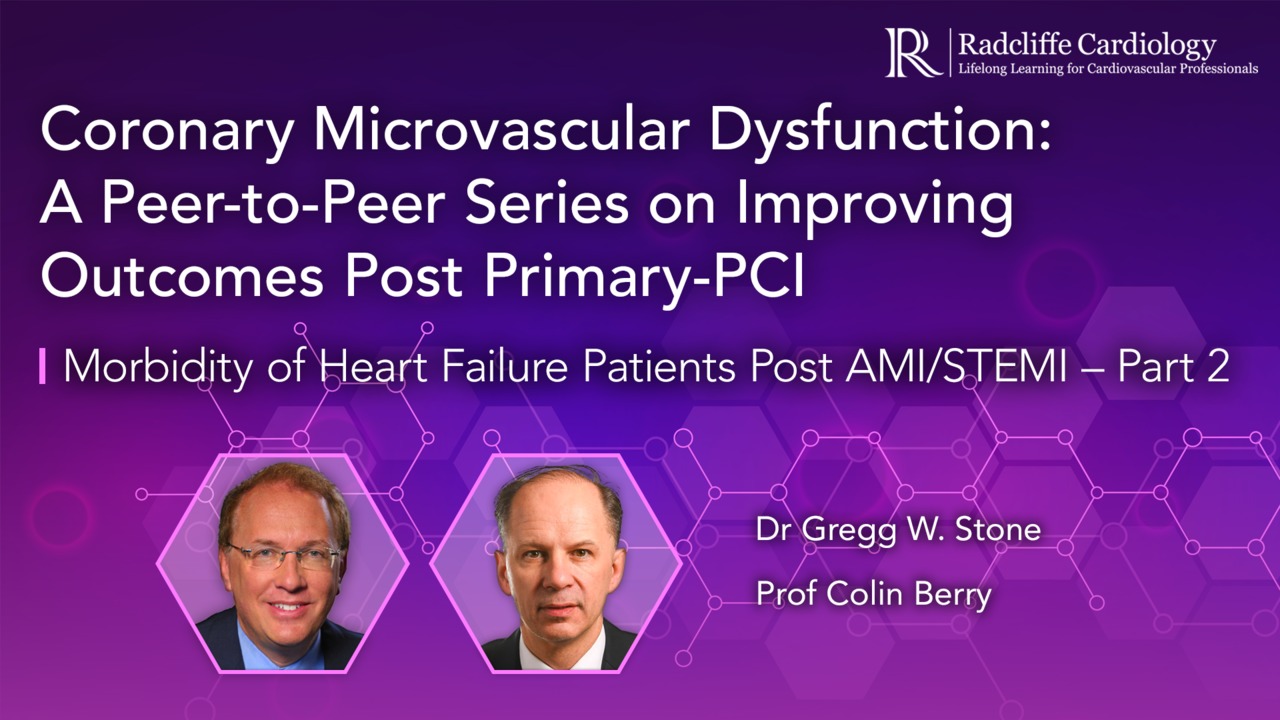 6m 25sPart 1 | Session 2 Morbidity of Patients Post AMI/STEMI — Part B Gregg Stone, Colin Berry
6m 25sPart 1 | Session 2 Morbidity of Patients Post AMI/STEMI — Part B Gregg Stone, Colin Berry
-
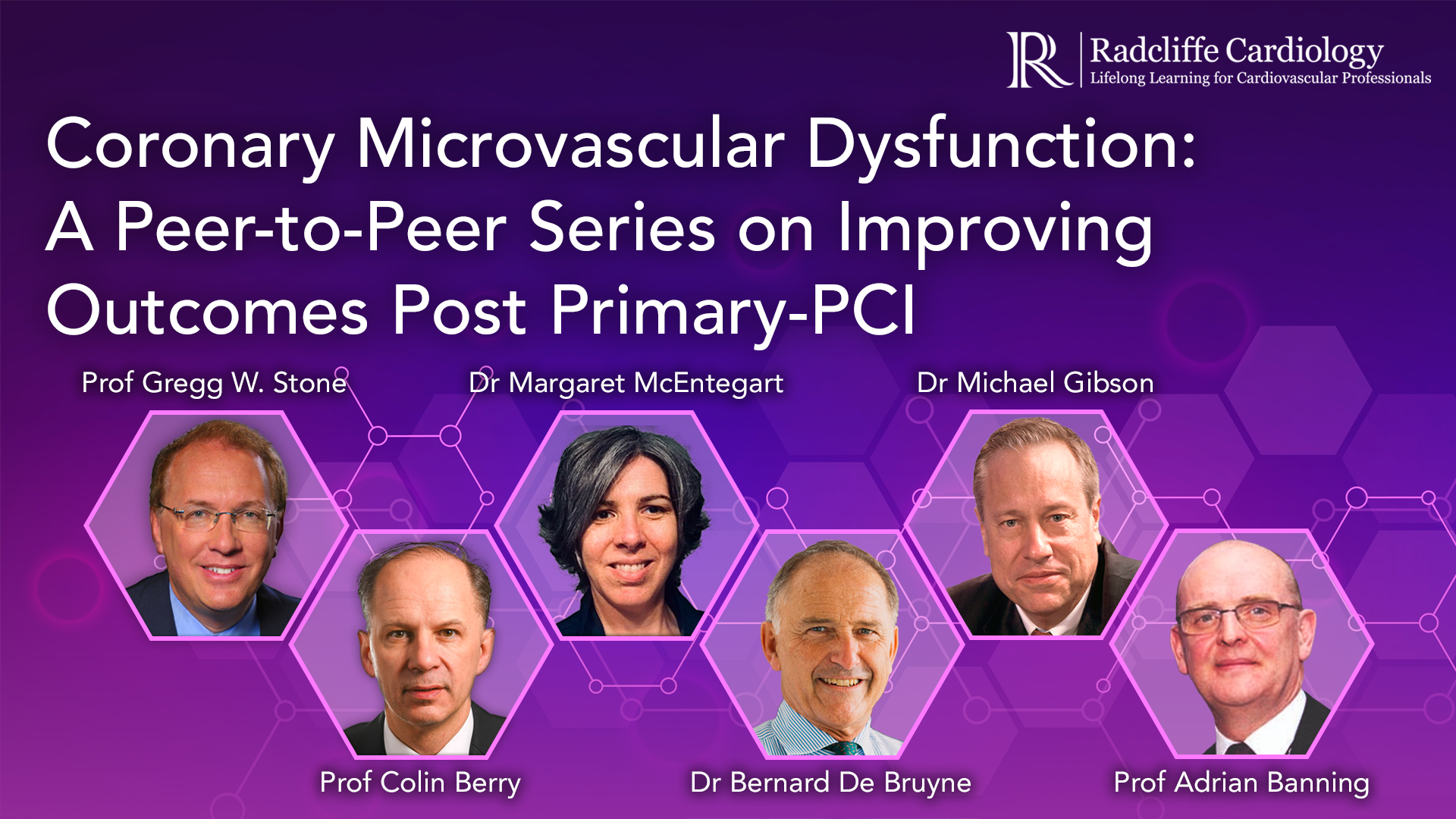 5m 45sPart 2 Microcirculation and Microvascular Obstruction Post AMI/STEMI and its Relation to Infarct Size Gregg Stone, Margaret McEntegart
5m 45sPart 2 Microcirculation and Microvascular Obstruction Post AMI/STEMI and its Relation to Infarct Size Gregg Stone, Margaret McEntegart
-
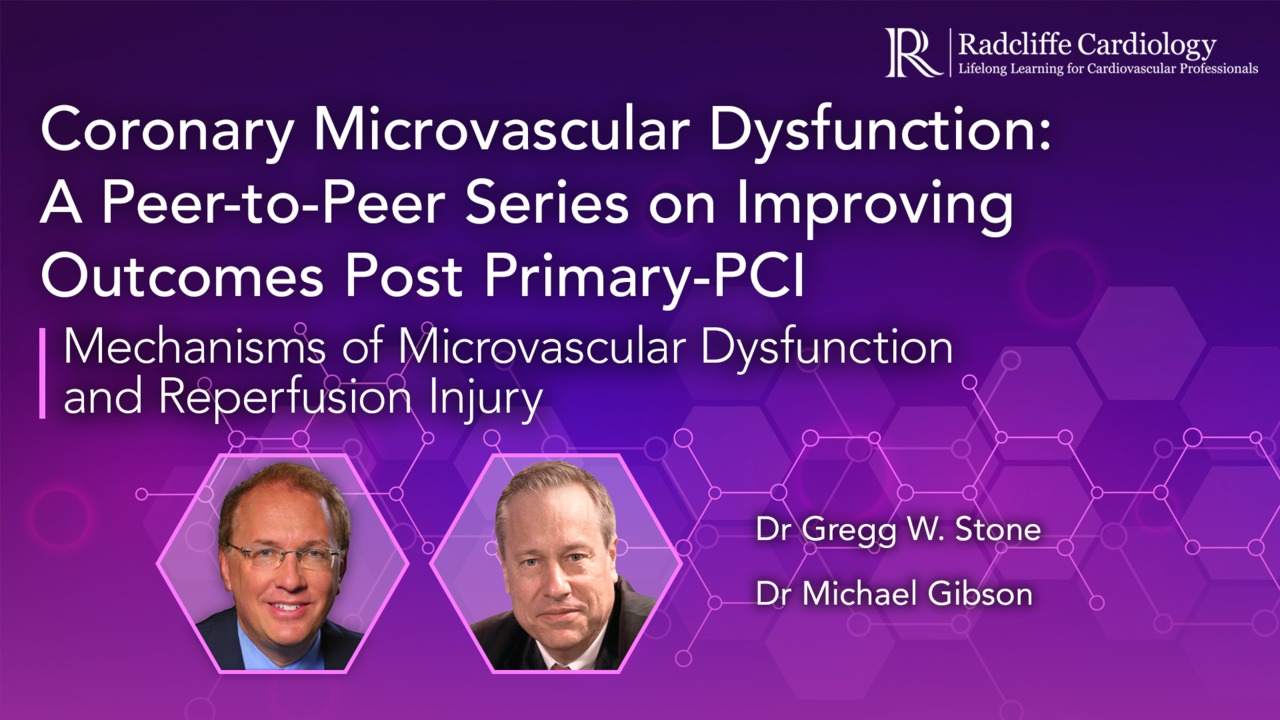 5m 40sPart 3 Mechanisms of Microvascular Dysfunction and Reperfusion Injury Gregg Stone, Michael C Gibson
5m 40sPart 3 Mechanisms of Microvascular Dysfunction and Reperfusion Injury Gregg Stone, Michael C Gibson
-
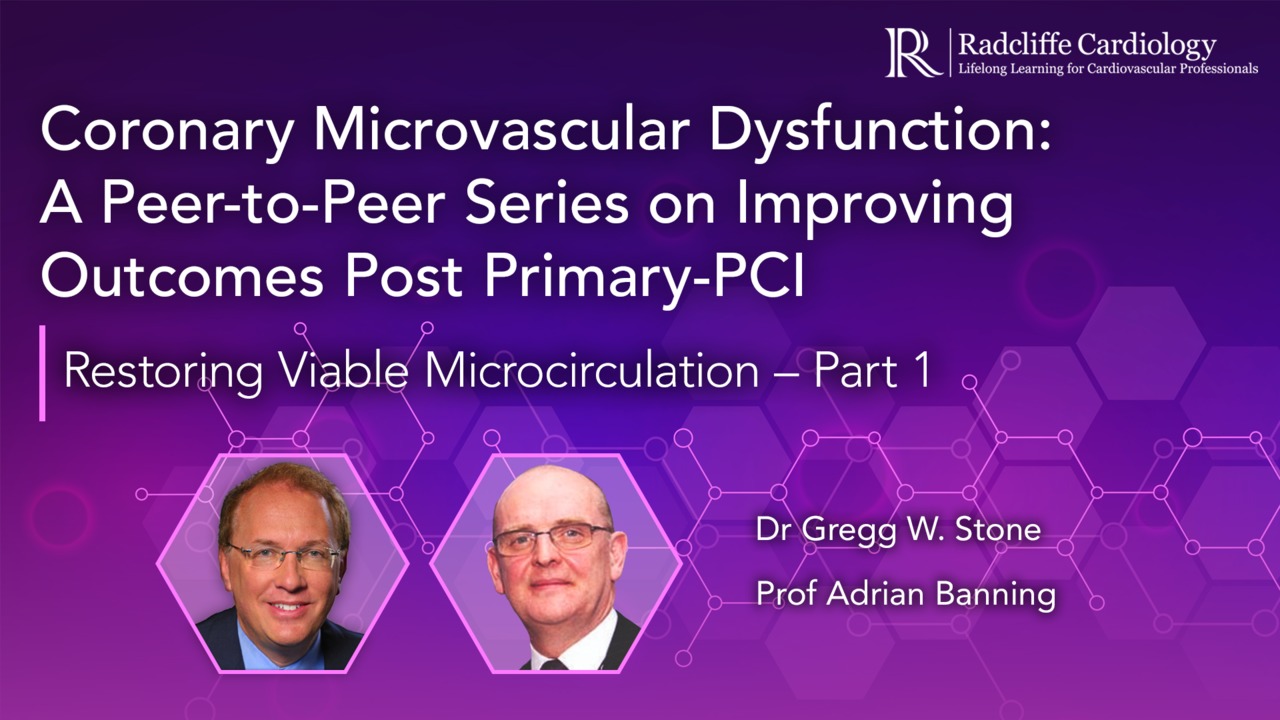 5m 37sPart 4 | Session 1 Restoring Viable Microcirculation — Part A Gregg Stone, Adrian P Banning
5m 37sPart 4 | Session 1 Restoring Viable Microcirculation — Part A Gregg Stone, Adrian P Banning
-
 8m 43sPart 4 | Session 2 Restoring Viable Microcirculation — Part B Gregg Stone, Adrian P Banning
8m 43sPart 4 | Session 2 Restoring Viable Microcirculation — Part B Gregg Stone, Adrian P Banning
-
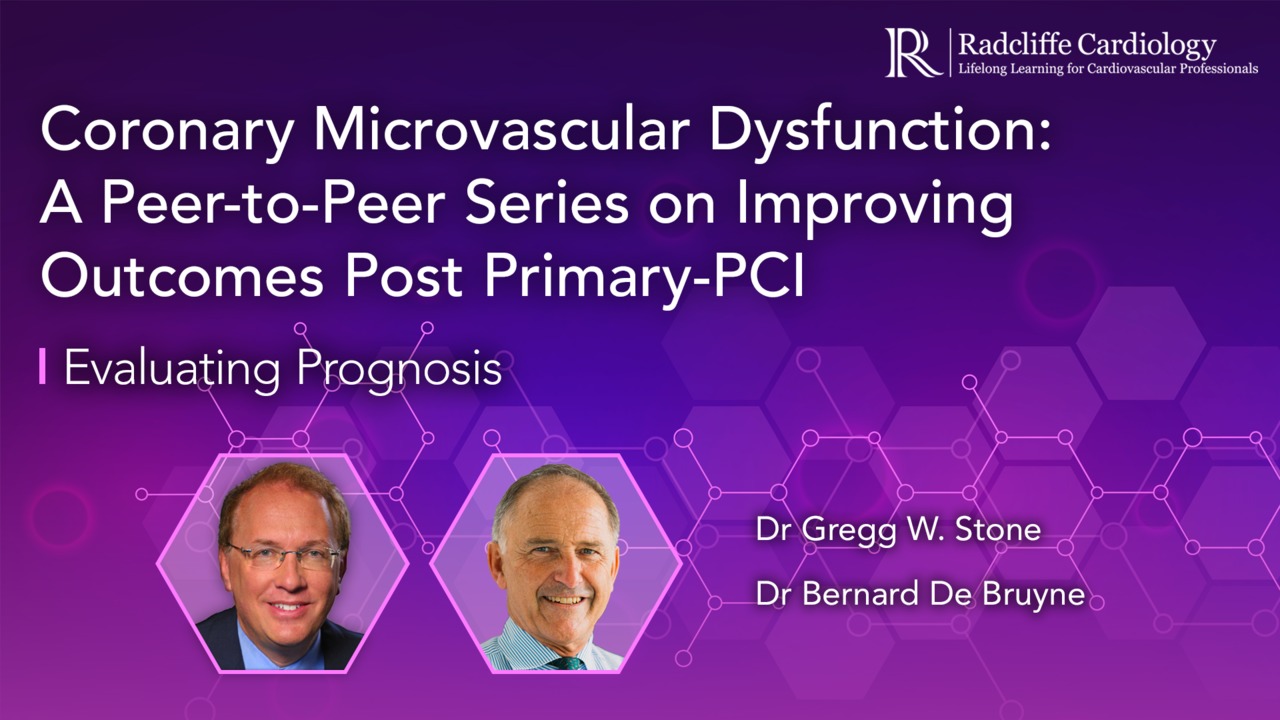 6m 9sPart 5 Evaluating Prognosis Gregg Stone, Bernard De Bruyne
6m 9sPart 5 Evaluating Prognosis Gregg Stone, Bernard De Bruyne
Overview
This peer-to-peer series is dedicated to evaluating microvascular dysfunction following myocardial infarction – an important cause of mortality and morbidity post primary-PCI.
Although epicardial coronary blood flow is restored after almost all PCI procedures, perfusion of the coronary microvasculature is not fully restored in approximately half of patients. In this series of bitesize interviews, Prof Gregg Stone (Professor of Medicine, Professor of Population Health Sciences and Policy, and Director of Academic Affairs, Mount Sinai) examines this unmet need with help from a celebrated faculty of experts. Together, they will be covering everything from pathophysiology of microvascular dysfunction to current approaches to restoring microvascular perfusion post primary-PCI.
These shorter videos are ideal for those who are time-poor, or prefer to consume their education in short chunks. Don’t miss this unique overview from some of the world’s leading experts.
References
Cohen M, Boiangiu C, Abidi M. Therapy for ST-segment elevation myocardial infarction patients who present late or are ineligible for reperfusion therapy. J Am Coll Cardiol 2010;55:1895–1906.

Key Learning Objectives
- Recall residual mortality and morbidity associated with infarct size and microvascular dysfunction following AMI/STEMI
- Describe the relationship between infarct size, microvascular dysfunction and long-term outcomes AMI/STEMI patients
- Describe the pathological processes underlying microvascular dysfunction following AMI/STEMI
- List the clinical presentation features, biomarkers and imaging parameters associated with microvascular obstruction following AMI/STEMI
- Select suitable management approaches for minimising infarct size and microvascular damage in individuals requiring reperfusion
Target Audience
- Interventional Cardiologists
- General Cardiologists
- Imaging Specialists
More from this programme
Part 1
Morbidity of Patients Post AMI/STEMI
Part 2
Microcirculation and Microvascular Obstruction Post AMI/STEMI and its Relation to Infarct Size
Part 3
Mechanisms of Microvascular Dysfunction and Reperfusion Injury
Part 4
Current Approaches for Restoring Viable Microcirculation
Part 5
Process of Microvascular Dysfunction
| 1 session | |
| Evaluating Prognosis | Watch now |
Part 6
Process of Microvascular Dysfunction
Faculty Biographies

Andrew JS Coats
Professor of Cardiology and Scientific Director
Prof Coats is Editor-in-Chief of the Cardiac Failure Review journal. He has published over 20 patents, more than 750 full research papers and more than 120,000 career citations and has a personal H-index of 146. Andrew was elected to the Presidential Trio of the Heart Failure Association of the ESC in 2018 and will serve as its president from 2020-2022.
Prof Coats is the Immediate past-President of the Heart Failure Association and past-Professor of Cardiology at the University of Warwick, UK. He has also held posts as Head of Cardiology at Imperial College, London and Associate Medical Director and Director of Cardiology at the Royal Brompton and Harefield Hospitals, London. From 2012 to 2017 he was Director of the Monash-Warwick Alliance, and before that served as Deputy Vice-Chancellor and Dean of Medicine at the University of Sydney.
He is an…






